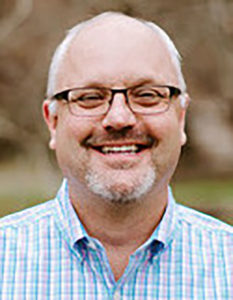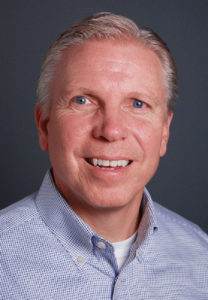 KNOXVILLE — Church revitalization can take all shapes and forms, a Knoxville Baptist pastor and director of missions affirmed.
KNOXVILLE — Church revitalization can take all shapes and forms, a Knoxville Baptist pastor and director of missions affirmed.
“Church revitalization is not a ‘one-size-fits-all’ approach,” said Phil Young, director of missions for Knox County Association of Baptists. “Much depends upon the culture and context of that local church,” the DOM noted.
For some churches, an ‘adoption-style’ partnership is the best approach. For others, a more ‘organic’ approach is the best option.
“Others prefer a ‘partnership approach,’ while some situations are best suited for a ‘merger.’ Regardless the approach taken, spiritual renewal in the hearts of the people is essential. The best strategy alone is no substitute for a posture of humility and a selfless desire to be part of a church reaching a community for Christ,” Young said.
Pastor Donny Wadley of First Baptist Church, Fountain City (known now as Fountain City Church), agreed. There are so many ways to revitalize a church, said Wadley who has been involved with two totally different approaches in Knoxville.
In 2006, Wadley was an elder at First Baptist Church, Powell, when First Baptist Church, Fountain City, approached them about the possibility of partnering with them to do some ministries they were unable to do on their own.
FBC, Powell, agreed to help and would send some of their members over to Fountain City to assist in musical presentations at Christmas and Easter. The church also helped Fountain City with teacher training and Vacation Bible School, among other things, Wadley recalled.
“We were just trying to help a neighboring church in Fountain City who asked us to come,” he said.
After some time had passed, the FBC, Fountain City, pastor left and a deacon asked if First Baptist, Powell, would consider a merger, Wadley said.
The leaders of FBC, Powell, agreed and on May 28, 2008, the merger occurred. First Baptist, Fountain City, became a satellite campus for FBC, Powell. Property was transferred to First Baptist, Powell.
The church’s then-pastor, Phil Jones, would preach at both locations. A few years later Wadley felt God was leading him to preach and he eventually became the campus pastor at Fountain City Church.
Reflecting on the situation, Wadley noted that First Baptist Church, Powell, was not seeking to establish satellite campuses. “We were just following God step by step. We didn’t have a plan or approach. They came to us.”
Young noted that FBC, Powell, and Fountain City Church used the “adoption” form of church revitalization. “In this approach, the church being revitalized is ‘adopted’ by the partner church — basically functioning as a campus of the ‘adopting’ church.
“All assets, leadership, finances and other matters are transferred under the ‘adopting’ church,” Young said. “Once revitalized, First Baptist, Powell, released Fountain City Church to be autonomous once again,” Young said.
“A close partnership began that resulted in Fountain City Church experiencing a vibrant revitalization,” the DOM added.
Wadley agreed. “Bro. Phil saw that we were growing at Fountain City and he came to me in 2016 and said that maybe it’s time for us to go back to being on our own.” The process was initiated and everything was transferred back to Fountain City Church, effective Jan. 1, 2017, Wadley said.
In the meantime, Fountain City Church had a Next Generation pastor (Chris Conner) who had accepted Christ while Fountain City Church was being revitalized. Conner felt called to become a senior pastor. (See story on page 1).
![]() At the same time, an older, established church in Knoxville was on the verge of closing its doors. “After years of decline, Washington Pike Baptist Church needed help,” Young said.
At the same time, an older, established church in Knoxville was on the verge of closing its doors. “After years of decline, Washington Pike Baptist Church needed help,” Young said.
“Their leadership reached out and discussions of partnership began with leaders of Fountain City Church. Following several months of discussion, a new partnership agreement was reached. Fountain City Church would partner with Washington Pike in a revitalization effort, only this time the partnership would be slightly different,” Young observed.
“When Fountain City Church entered into partnership with Washington Pike, they chose not to take on ownership of the building and resources; but instead, sent a pastor and other leadership to guide the revitalization,” Young said.
The partnership agreement also included financial support from Fountain City Church for an established period of time, he added.
“One key factor in the success of this approach — the new leadership for Washington Pike Church was whole-heartedly supported to initiate and implement necessary changes. This was absolutely essential in the positive results that have already been realized,” Young stressed.
Wadley observed that “Washington Pike Baptist Church didn’t need a big brother. They needed a group of people who wanted to follow Jesus, tell others about Jesus and serve Him in that community.”
Wadley also noted that God had provided a leader (in Chris Conner). We just needed a place for him to go, and God opened that door at Washington Pike.”
While Fountain City was more than willing to plant a church, the opportunity to revitalize a church was a viable option “because we (Fountain City Church) had been revitalized. It’s in our DNA,” Wadley said.
Young said that “to see one church revitalized is a beautiful thing. To see that same revitalized church move on to help revitalize another church is a life-giving expression of what it means to be the church on God’s mission.
“When new life is discovered, you can’t help but want to pass that along to someone else,” he said. B&R


